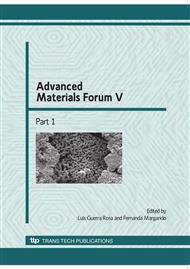p.344
p.348
p.356
p.361
p.369
p.374
p.380
p.387
p.392
Electrical and Mechanical Examination of PLZT/PZT Graded Structure for Photovoltaic Driven Piezoelectric Transformers
Abstract:
Lanthanum-modified lead zirconate titanate (PLZT) ceramic materials have gained considerable attention due to their photostriction, which is the superposition of photovoltaic and piezoelectric effects. Functionally Graded Materials (FGM) implemented in construction of Piezoelectric Transformer (PT) can be used for direct converting photonic energy to electrical one by implementing photostrictive actuators with piezoelectric generator in one graded structure of piezoelectric transformer. Possible application in electronic industry needs thoroughly electrical and mechanical characterisation of this new FGM structure constructed from the PLZT/PZT material. Measurements presented in this work reveal high electrical anisotropy of this graded structure and the Impedance Spectroscopy (IS) proved to be a method capable to present such inequality in form of well separated semicircles. Additionally, dielectric measurements demonstrated that the characteristics of the graded structure are not a simply addition of starting materials parameters but are deeply influenced by a predominantly diffusion direction. Finally, additional nano-mechanical and -electrical methods are used for clarifying the complexity of the integration process of FGMs.
Info:
Periodical:
Pages:
369-373
Citation:
Online since:
January 2010
Authors:
Price:
Сopyright:
© 2010 Trans Tech Publications Ltd. All Rights Reserved
Share:
Citation:


